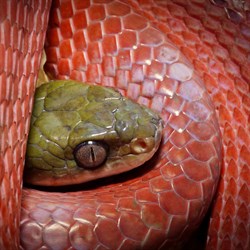View Animal :
Brick[b nigriceps M]
|
|

Back to glenbrooks's Animals
|
Recent Tracking
|
Date
|
Action
|
|
08/12
|
Shed
-
Shed
|
|
08/05
|
Feeding
-
Fed (1) F/T Chicks - Small
|
|
07/28
|
Feeding
-
(1) Chicks - Small
|
|
07/20
|
Feeding
-
(1) Chicks - Small
|
|
07/13
|
Feeding
-
(1) Chicks - Small
|
View Tracking
|
|
|
Animal Name:
|
Brick
|
|
Reference Code:
|
b nigriceps M
|
|
Species:
|
Black-Headed Cat Snake
Boiga nigriceps
|
|
Sex:
|
Male
|
|
|
|
|
|
|
Thanks to everyone who helped test the new features. If you find any problems, please
Let Me Know.
|
 |
|
Todays Birthdays
|
NJ Chondros
,
erikpaterson
,
Springroll
,
wendhend
,
MissMowgli
,
CanQuitAnytime
,
Chondromania
,
Kerig3
,
Searchaftex
,
Thumbelina
,
danieltuttle
,
Wondering4toolong
,
queztacoatl
,
Ian2587
,
CodeRed
,
Luke1225
,
kingofchaos
,
albinolavenderretic
,
quetzalcoatal
,
Lobo_Reptiles
,
Sabol
,
army_greywolf
,
rare planet
,
5280 Reptiles
,
VeeDubZ
,
BrittneyLynn
,
burmcrzy
,
GilaMonster
,
searnestnadia
,
ajordan
,
reticulatedpython
,
Clezy13
,
thependers4
,
ghostboas
,
liloutdoorking45
,
Mr.Stylez
,
YvetteLer
,
Clezy09
,
EOTechgax
,
Chris Perle
,
VelvetScales
,
greenanaconda
,
ksmart
,
AnthonyAmisy
,
SanvozBah
,
ksmart5
,
justin chabot
,
Leupoldvmv
,
RichardJat
,
Ergo_proxy
,
tcsgroupa
,
RockStar
,
Vitamixzbv
,
nenomzehf
,
Scannerhql
,
DamJoe
,
albinoretic
,
kdsmith1988
,
Humminbirdylh
,
outdoorking
,
HMiller
,
Rigidlin
,
bandedgilamonster
,
LizaLaw
,
Lulu
,
ujirozejize
,
liloutdoorking
,
ecoatbelstaff
,
VawsomhAk
,
Dropspace230
,
Linuggmaype
,
GrigoriyCoade
,
Mildreddourf
,
Belkopded
,
Matthewscema
,
snowboas
,
Dysonzpt
,
Stephanieanago
,
Karbopepap
,
Timothypah
|
|
|
|